| Corcoran Technical Trading Patterns For February 2 |
| By Clive Corcoran |
Published
02/2/2009
|
Stocks
|
Unrated
|
|
|
|
Corcoran Technical Trading Patterns For February 2
During January 2009 the Dow Jones industrials (DJIA) dropped 8.8% and the S&P 500 index lost 8.6 percent. Many market analysts have pointed out just how bad an omen that is for the rest of the year, as the market usually ends a year down after having fallen in January.
An associate in Dublin has actually quantified how reliable this is as an omen, and I shall quote directly from his daily report. "The barometer has been right 91.4% of the time since 1950, failing to predict the S&P 500's direction only five times in the period."
In the immediate future, observing how much downside progress traders can make today if we see a clear challenge by the bulls to defend the 800 level on the S&P 500, will bring some clarification to the intermediate-term outlook.
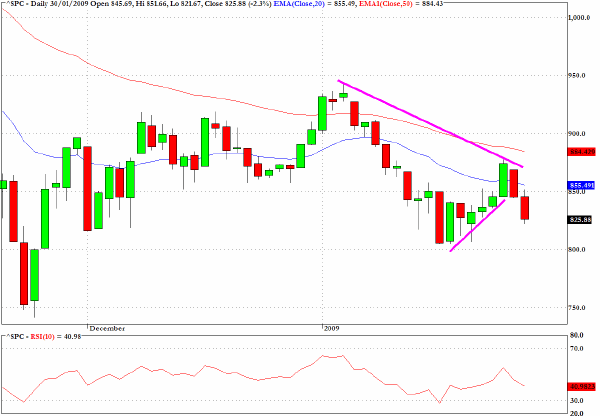
The Dow Jones Transportation (^DJT) actually registered a multi-year closing low at the end of last week, ending just a fraction below the closing level seen on January 23.
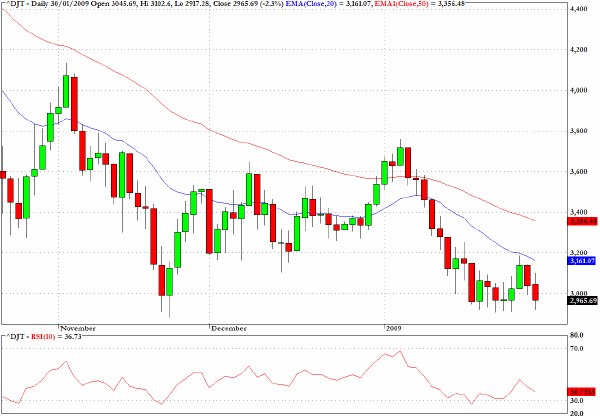
The German Dax Index is struggling as this is being written with a 2.4% decline and seems destined to test yet again the low levels from November and the intraday low, from January 23, of 4067.
I have highlighted just how sharp the recent reversals have been on this index and if the current reversal echoes that seen in early January we still have some distance to go pointing to a possible breach of the 4000 level.
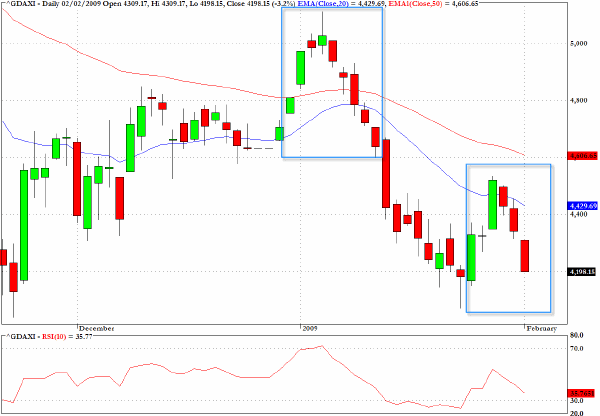
In Asian trading on Monday the Japanese market continued its decline falling even further below the 8000 level while the Hang Seng Index dropped more than 3%.
The lines drawn on the chart below suggest what might be considered as a failure of a bottoming W formation. The rejection that took place for the index almost exactly at the 20-day EMA (the blue line) on the chart last week puts the balance of probability in favor of a further requirement to revisit the November low again.
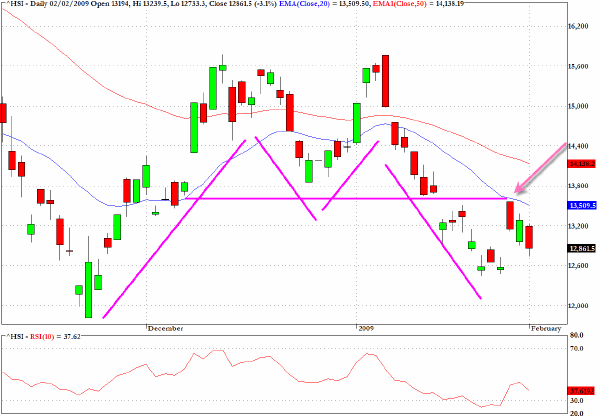
XLF, one of the most actively traded sector funds for the financials, is still registering a positive momentum divergence but this could be in danger of disappearing if the dithering about what to do about the debris from "impossible to value" securitizations in the banking sector is not cleaned up sooner rather than later.
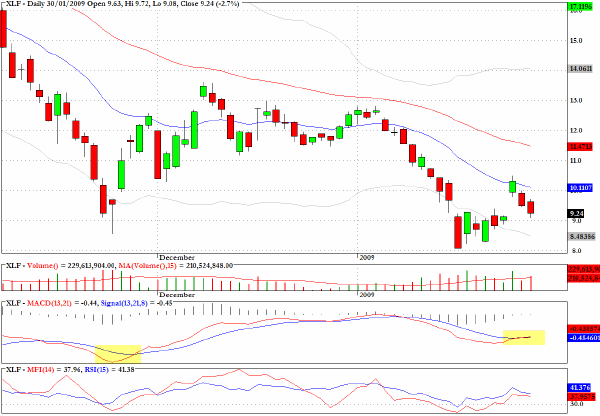
XLP, the sector fund for Consumer Staples, took a nasty hit on increased volume in Friday's trading. One scenario which has the kind of counter-intuitive appeal that I look for is that we may be near the bottom for the financial sector but could still go to new lows on the overall indices because of the quite dramatic change in global consumer behavior, which is being reflected in a drastic reduction in final demand based in part on a much greater propensity to save.
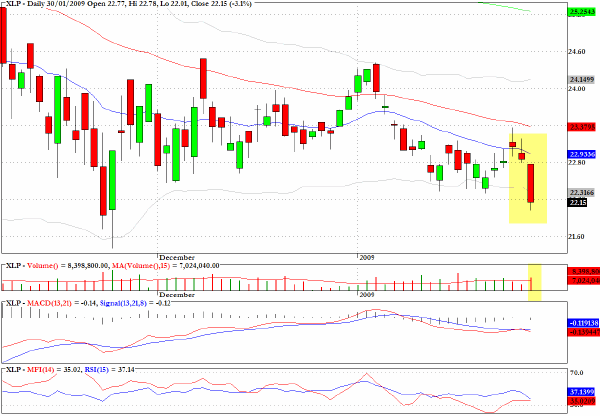
Clive Corcoran is the publisher of TradeWithForm.com, which provides daily analysis and commentary on the US stock market. He specializes in market neutral investing and and is currently working on a book about the benefits of trading with long/short strategies, which is scheduled for publication later this year.
Disclaimer
The purpose of this article is to offer you the chance to review the trading methodology, risk reduction strategies and portfolio construction techniques described at tradewithform.com. There is no guarantee that the trading strategies advocated will be profitable. Moreover, there is a risk that following these strategies will lead to loss of capital. Past results are no guarantee of future results. Trading stocks and CFD's can yield large rewards, but also has large potential risks. Trading with leverage can be especially risky. You should be fully aware of the risks of trading in the capital markets. You are strongly advised not to trade with capital.
|